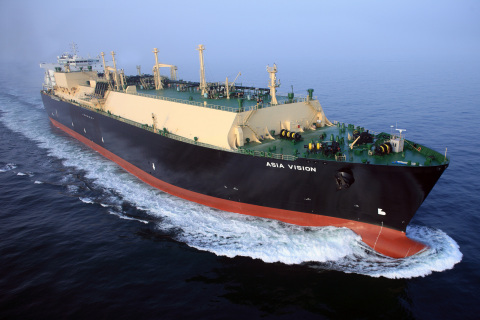
New liquefied natural gas (LNG) supplies are coming online just as demand growth in some major markets weakens, resulting in a major reshaping of the global gas trade in the next five years.
That’s the view of the International Energy Agency (IEA) in its 2016 Medium-Term Gas Market Report published today.
A weak outlook for Japan and Korea – the world’s top two LNG buyers – means new supplies will need to find other markets.
China, India and ASEAN countries will emerge as key buyers.
As demand growth for coal and oil also weakens, the share of gas in the energy mix is still expected to show a modest increase by 2021.
IEA executive director Fatih Birol, said: “We see massive quantities of LNG exports coming on line while, despite lower gas prices, demand continues to soften in traditional markets. These contradictory trends will both impact trade and keep spot gas prices under pressure.”
Birol added that the combined factors of cheaper coal and continued strong renewables growth were blocking gas from expanding more rapidly in the power sector.
He warned that today’s oversupply could foreshadow a number of supply-side challenges and security risks down the road, noting that a growing level of LNG export capacity had gone offline during the past five years due to technical and security issues and that such problems could get worse with low oil and gas prices.
The annual IEA report, which gives a detailed analysis and five-year projections of natural gas demand, supply and trade developments, sees global demand rising by 1.5% per year by the end of the forecast period, compared with 2% projected in last year’s outlook.
Slower primary energy demand growth and the decline in the energy intensity of the world economy are lessening demand growth for all fossil fuels, including gas, according to the IEA.
While gas demand is projected to remain weak, global LNG exports will increase substantially.
Between 2015 and 2021, liquefaction capacity will increase by 45%, mostly from the United States and Australia. New projects in both countries have commenced ramping up production. Several others are at an advanced stage of development. By 2021, Australia will rival Qatar as the world’s largest LNG exporter and the US will not be far behind.
“Unwanted” LNG supplies will look for a home in Europe, due to the flexibility of its gas system and well-developed spot markets the IEA states leading to intense competition among producers to retain or gain access to European customers.
“We are at the start of a new chapter in European gas markets” Birol said.
Ample LNG supplies will also affect markets outside Europe. Weaker-than-expected demand in Asia is leaving several large LNG buyers in the region over-contracted.
Recommended for you
